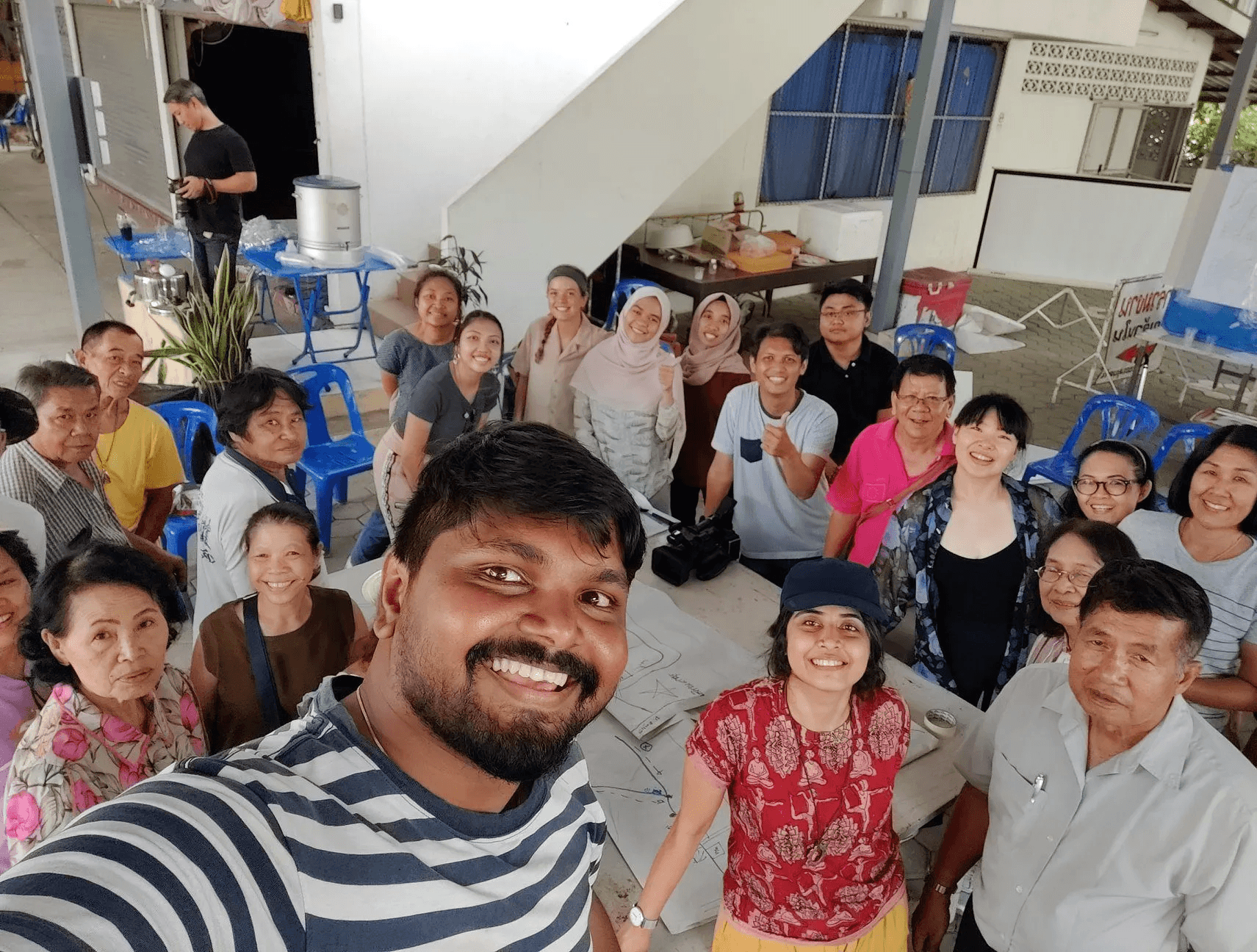
Event Structure
An Unconventional Format
The event’s structure is different from traditional conferences. The agenda is set by those who attend, and the rules are simple:
PRODUCT-ORIENTED
There will be presentations and discussions, but we focus on opportunities to make, write, design, code, question, break.
FLUID TIMEFRAME
Come for as long or as short as you can over a month-long period.
DOCUMENT YOUR WORK
Produce something while you are there: an art piece, policy brief, music, map, digital app, risk model, etc. Document your work, and contribute to the conference community.
EMERGENT SCHEDULE
Few organizers will lead a set of workshops and trainings, but most of the schedule is created by participants (bring your own project, host a workshop, run an activity).
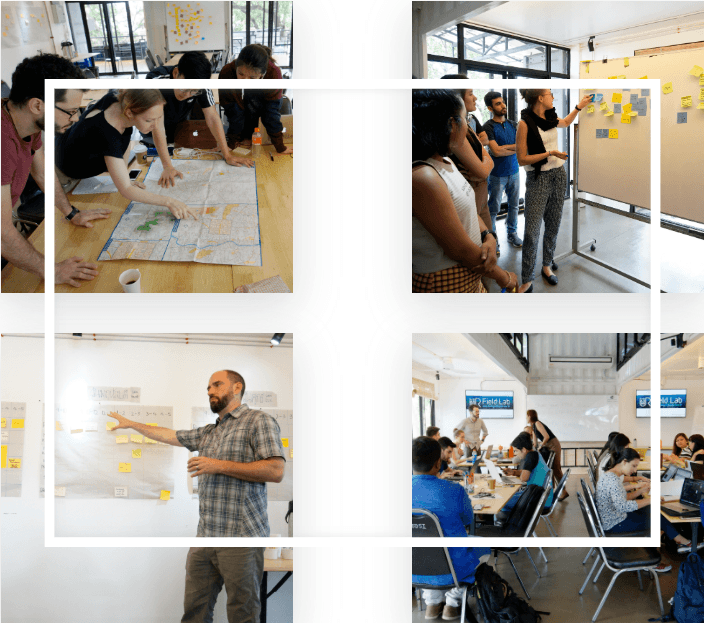
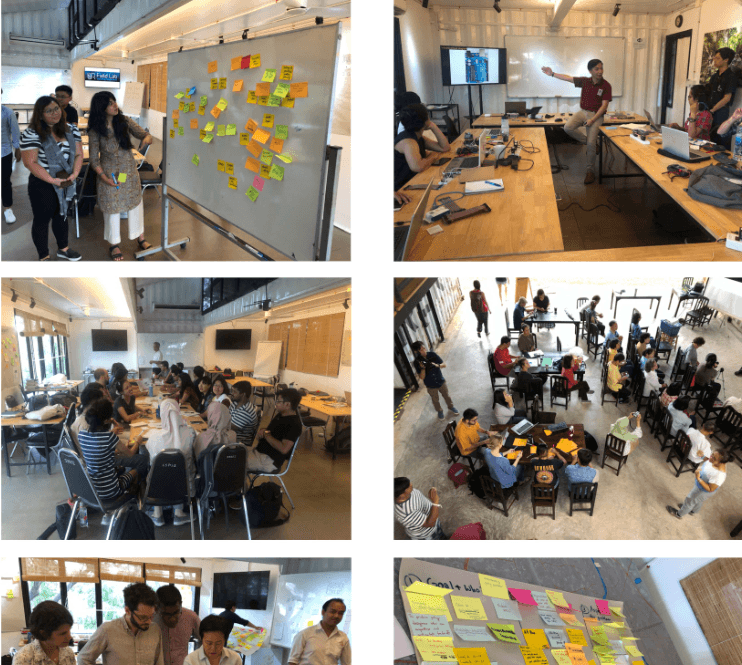
An Open Space Model
The UR Field Lab followed an “open-space” model. Compared to typical conferences with a predefined schedule and clear delineation between organisers and participants, an open-space puts the participants in control. An overall thematic calendar was provided for the month, but participants developed specific projects that were not predefined. They decide their objectives, and how to structure their time and activities to accomplish them. All participants are equal and everyone is a speaker. Participants take ownership of the schedule (see the Board) and their individual time. Everyone is a co-organizer and participant.
A Month-Long Field Lab
The long-duration of the event enabled flexibility for participants to join for as long or little as they wanted as fit their schedule (minimum 1-week commitment).
It also enabled the formation of deep collaboration (strengthened by emergent friendships) and the development of extensive projects (including ideation, prototyping, failing, re-trying…).
An overall thematic-calendar was shared during the event application process, so that participants could schedule their participation and even form working groups prior to the start of the event.
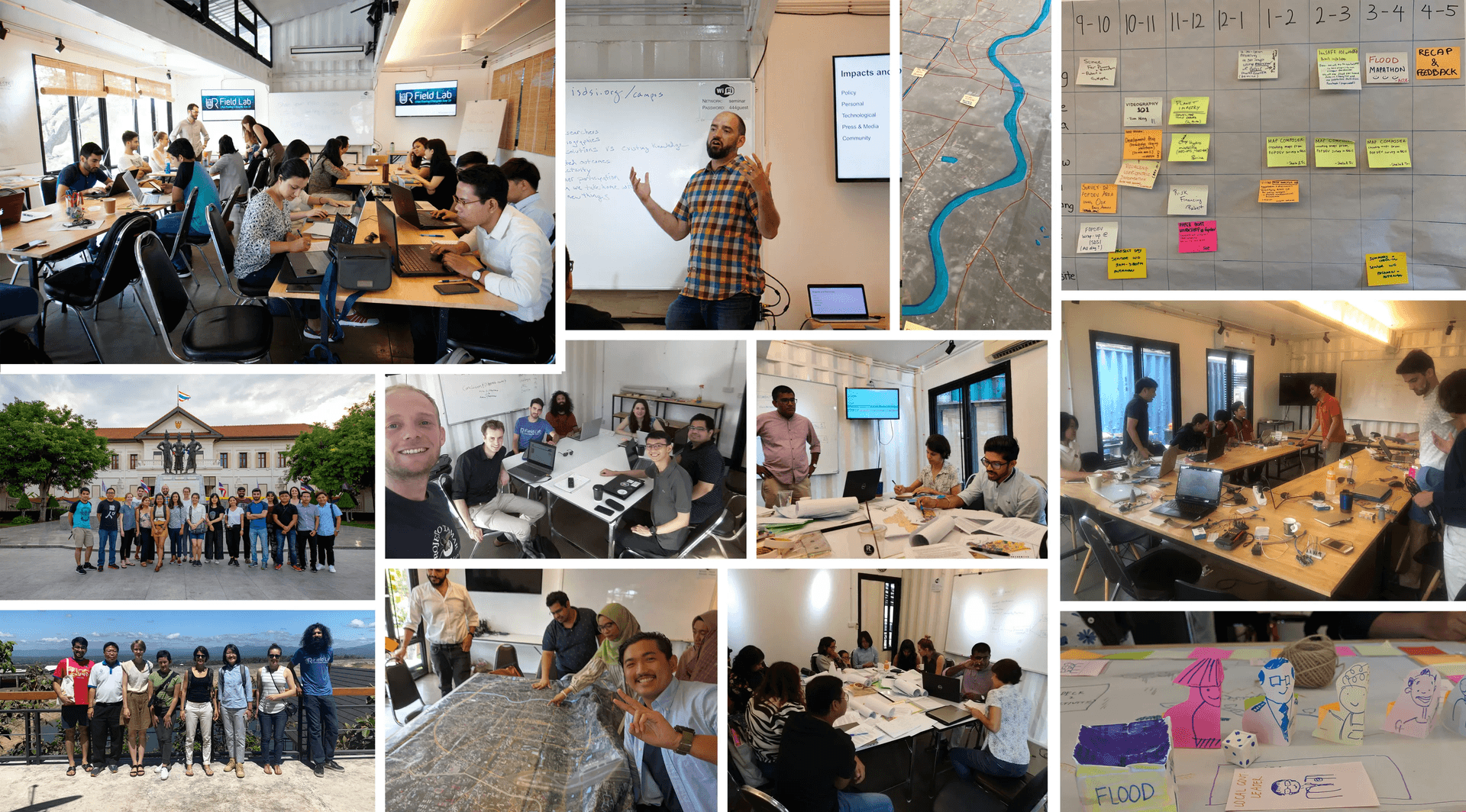
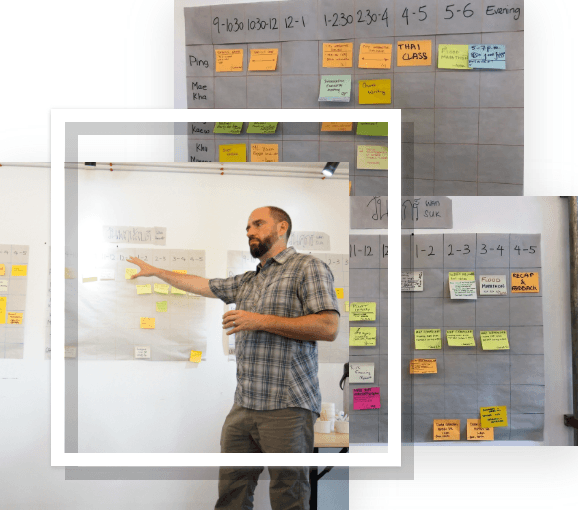
The Board
The main tool to structure the schedule of activities was “the board,” which was an analogue schedule of the week. Each day was divided grid-wise with each of the major rooms and working areas along one axis, and time slots along the other. Participants used sticky-notes to post session topics on the board, using placement of the note to indicate a location and time.
Open-Mic Board
Another board was created for people to post sticky notes with calls for project assistance, field trip ideas, or other requests and suggestions.
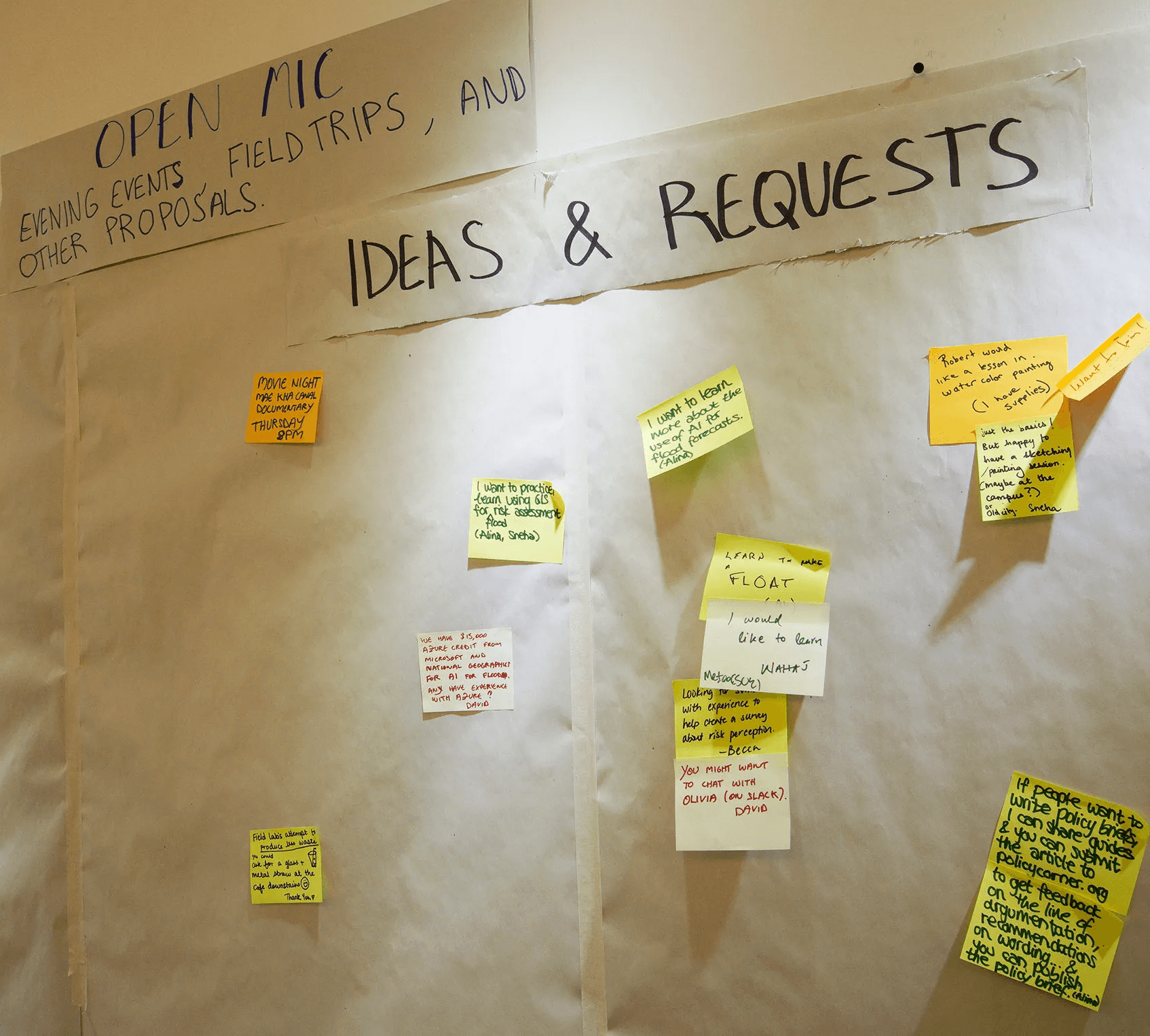
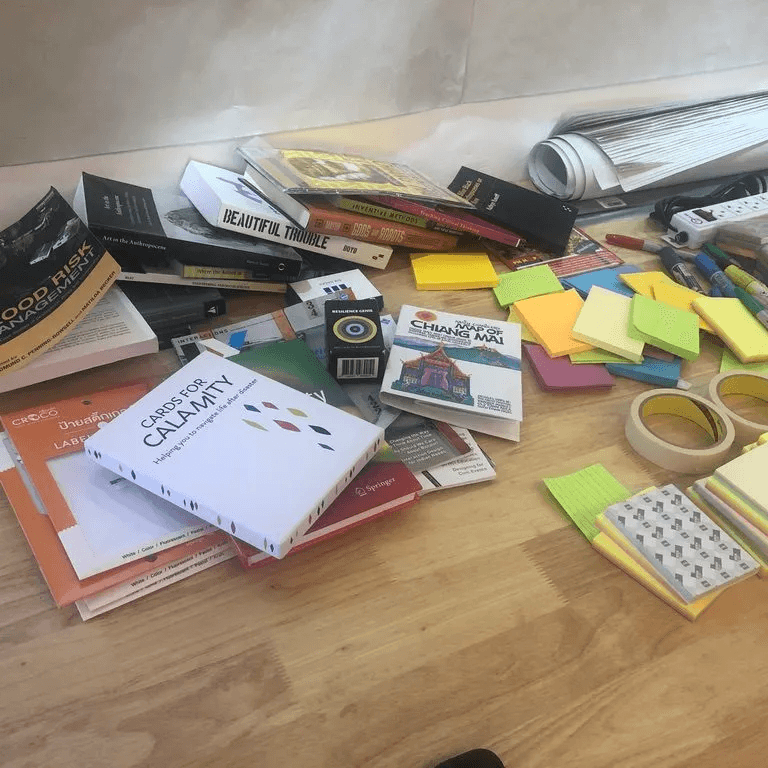
Resource Library
A resource library was used for participants to share books related to flood management, art, design, Thai history, and other relevant topics as well as sticky-notes, markers, scissors, tape, and other materials.
The physical space
The flexibility and diversity of the the ISDSI space was critical for the success of the field lab. Rooms of multiple sizes, covered outdoor space, fully outdoor space, quite library-space and the cafe space enabled a huge diversity of activities, including large/small discussion groups, building and prototyping, large-audience presentations, quiet individual writing, collaborative mapping, testing sensing equipment etc. In addition, we partnered with Weave Artisan Society, who made available a separate space to build and exhibit artwork produced through the field lab.
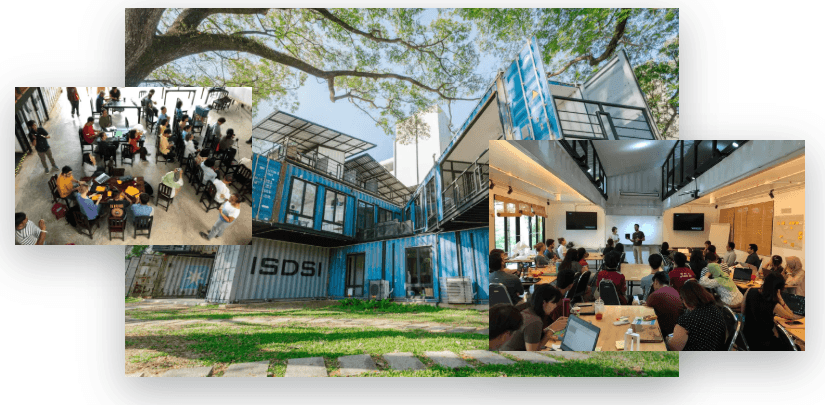
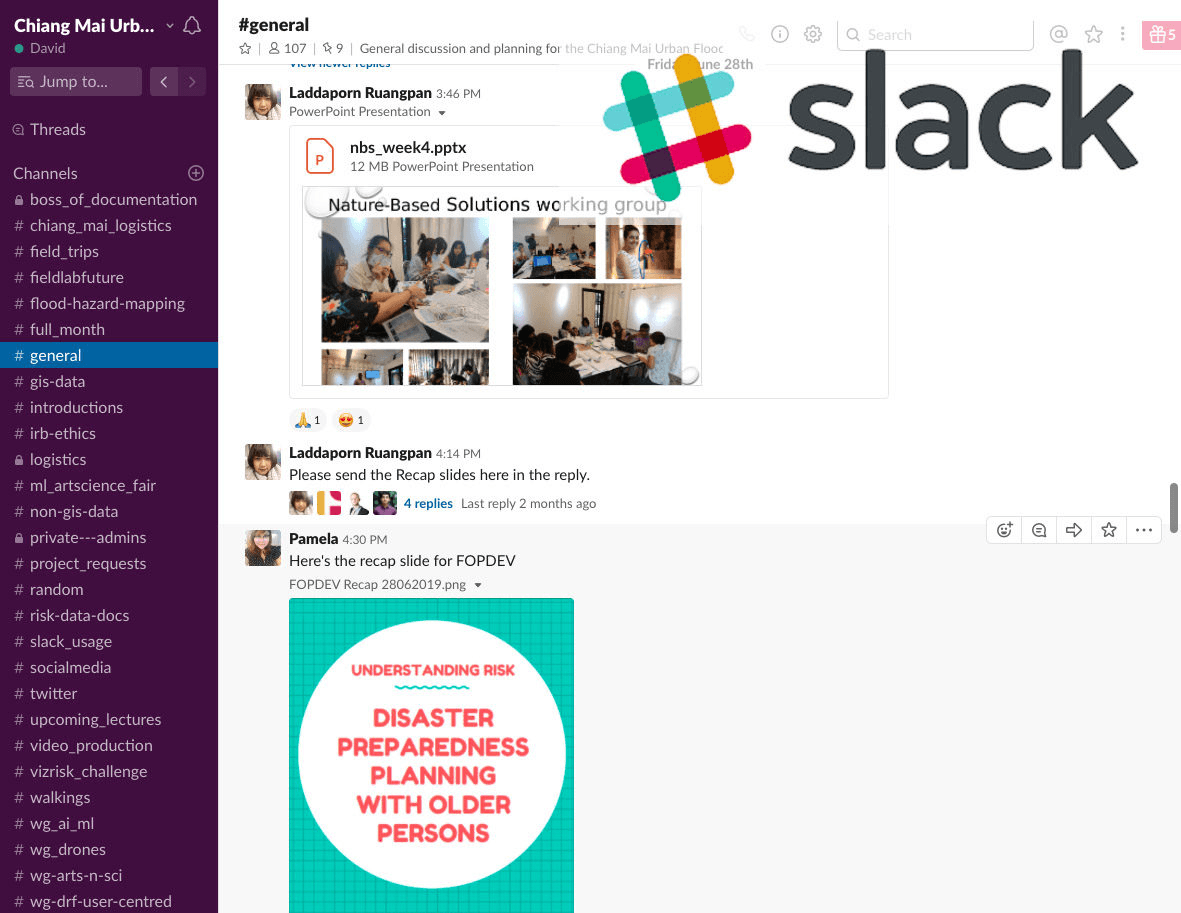
Slack for Online Communication
A Slack workspace was created several months prior to the event and added registered participants to discussion channels based on themes or other matters. This facilitated conversations prior to the field lab, discussion / advice on logistical matters, sharing of references etc. During the Field Lab the slack workspace used for rapid communication, sharing of documents and updates. In particular, given that multiple sessions were always running in parallel, it enabled participants to stay up to date with projects even if they had to miss a session. New discussion channels were created as needed by participants.
Building a safe space to collaborate
Orientation every monday morning included a discussion of the event code of conduct. The following statement was shared:
“We are dedicated to providing a harassment-free conference experience for everyone, regardless of gender, gender identity and expression, age, sexual orientation, disability, physical appearance, body size, race, ethnicity, religion (or lack thereof). We do not tolerate harassment of conference participants in any form. Sexual language and imagery is not appropriate for any conference venue, including talks, workshops, parties, Twitter and other online media. Conference participants violating these rules may be sanctioned or expelled from the conference without a refund at the discretion of the conference organisers. Everyone is welcome to participate in the Chiang Mai Urban Flood Lab.”
As organizers we strive to make our event inclusive and safe for all participants.
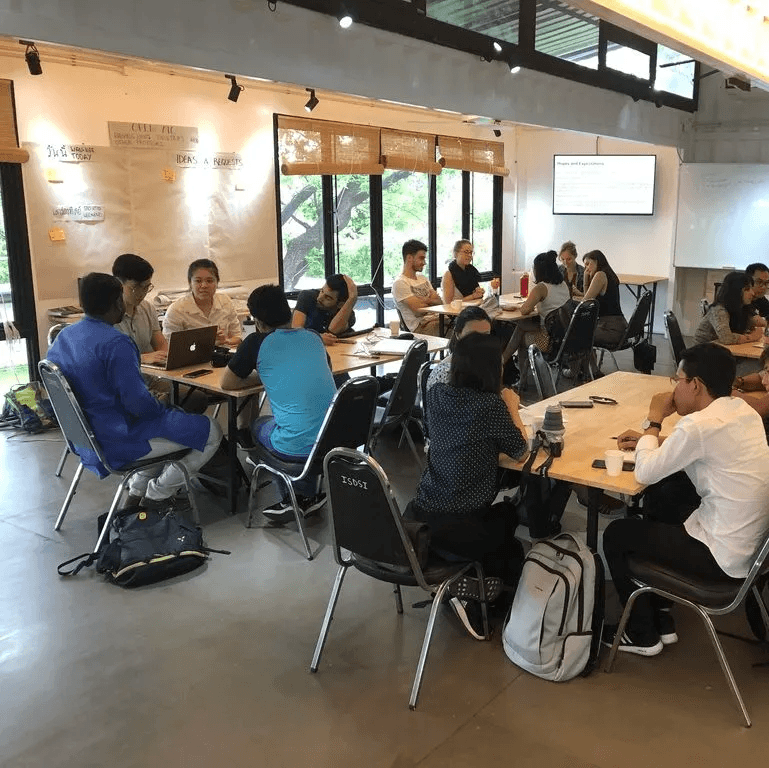
Facilitating Inclusive Participation
Numerous elements of the field lab were used to facilitate inclusive participation, including:
– No registration or participation fee was levied
Scholarships were provided to select participants, including flight, lodging and stipend for the entire month
– Attention to diversity and inclusion in the selection process of participants
– Affordable location, well connected to numerous international destinations
– Lunch and coffee/tea provided to all participants every day, including options for those with dietary restrictions
– Flexible timeframe to facilitate participation despite busy schedules
– Advertisement of the event through diverse channels
Thai-speakers / translators available as needed
ENGAGING WITH CHIANG MAI
As much as possible the work conducted engaged with the local context and community through:
– Field visit to relevant flood-management sites, and for orientation within Chiang Mai
– Partnerships with and participation of local university professors and students, local civil society organizations, and local communities
– Lectures from local experts
– High-resolution satellite data of Chiang Mai purchased from Digitalglobe
Pre-compiled literature review on flooding issues in Northern Thailand
– Introductory Thai language classes every week
– Month-long art and science exhibit showcasing the works produced for the entire month following the field
